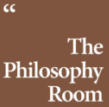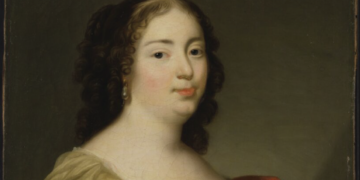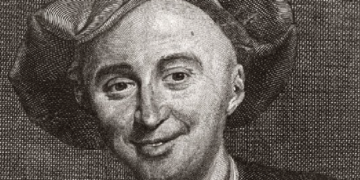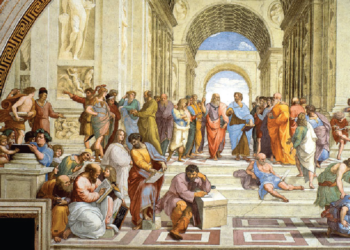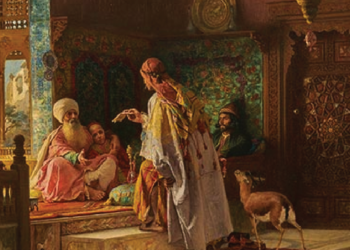Asadi Tusi
1) His Biography
Asadi Tusi, born around the early 11th century in the city of Tus in northeastern Iran, emerged as one of the seminal figures of classical Persian literature. His full name was Abu Nasr Ali ibn Ahmad Asadi Tusi. He lived during a dynamic period in Persian history, one shaped by the waning power of the Samanids and the rise of various regional dynasties, including the Ghaznavids and the Seljuks. These political shifts created a vibrant but often unstable environment for intellectual and artistic expression. Despite this, Asadi Tusi’s works flourished, contributing significantly to the development of Persian epic and didactic poetry.
Little is known about Asadi’s early life, but his mastery of Persian poetic forms suggests a solid classical education, likely influenced by both Arabic and Persian literary traditions. It is believed that he travelled extensively, particularly in regions such as Azerbaijan and Armenia, which had become new centres of Persian culture and learning. These movements exposed him to diverse dialects and cultures, broadening the thematic and linguistic scope of his poetry. His career reflects both courtly affiliations and intellectual autonomy, as he served various patrons while also writing with a strong personal and nationalistic voice.
Among Asadi Tusi’s most significant contributions was his role in continuing and enriching the tradition of the Persian epic. He is often considered a literary heir to Ferdowsi, and although he never attained the same level of fame, his efforts helped preserve and disseminate the heroic and moralistic spirit of the Shahnameh. His own epic, the Garshaspnama, is a testament to this legacy. It blends myth, history, and ethical instruction in a style reminiscent of Ferdowsi’s work, but with unique philosophical and stylistic flourishes.
In addition to epic poetry, Asadi Tusi made noteworthy strides in didactic and lexicographic literature. His Lughat-i-Furs (Dictionary of Persian) is considered the earliest surviving Persian lexicon. Composed in verse, it was intended to explain rare and obscure Persian words, particularly to speakers in the western Persian-speaking world who were more influenced by Arabic vocabulary. This work illustrates not only his linguistic skill but also his commitment to the preservation of the Persian language at a time when it was under cultural pressure.
Asadi’s reputation as a master of poetic debate, or munazara, further highlights his intellectual versatility. These poetic disputations, often structured as dialogues between personified animals or abstract concepts, reveal his rhetorical agility and philosophical depth. Through them, he explored ethical, theological, and existential questions in a manner that was both accessible and refined. His contributions in this genre influenced subsequent Persian poets and helped define the tradition of literary argumentation in Persian literature.
Despite his accomplishments, Asadi Tusi’s legacy was somewhat overshadowed by his more famous predecessors and contemporaries. He did not enjoy the same level of patronage or political favour as figures like Ferdowsi or Khayyam, and his works were sometimes confined to regional circles. Nevertheless, his writings were preserved and studied by later scholars and poets, who recognised their literary and linguistic value.
Asadi Tusi died sometime after 1072 CE, likely in Azerbaijan where he had spent his later years. Though not as universally celebrated as some of his peers, his contributions to Persian poetry, lexicography, and ethical literature remain deeply significant. He helped shape the canon of Persian classical literature, bridging the heroic past with emerging literary forms and audiences. His voice, deeply rooted in tradition yet innovative in form and content, continues to be revisited by modern scholars interested in the richness of Persian literary heritage.
2) Main Works
Garshaspnama (The Book of Garshasp)
This is Asadi Tusi’s most celebrated epic poem, written in the style of Ferdowsi’s Shahnameh. Composed in over 9,000 couplets, it recounts the heroic adventures of Garshasp, a legendary Iranian warrior descended from Jamshid. The poem describes Garshasp’s battles with dragons, monsters, and foreign kings, while also embedding moral and philosophical reflections. It serves both as a continuation of the heroic tradition and a vehicle for ethical instruction, celebrating Persian identity and martial virtue.
Lughat-i-Furs (Dictionary of Persian)
This is the oldest surviving Persian dictionary, written in verse form. It was compiled to help speakers in the western parts of the Persian-speaking world, especially in Azerbaijan and Armenia, understand rare and archaic Persian words, particularly those used in Ferdowsi’s Shahnameh. The Lughat-i-Furs not only lists definitions but also includes poetic citations to illustrate usage, making it an invaluable linguistic and literary resource.
Monazara-ha (Debates/Disputations)
These are a series of poetic dialogues in the munazara tradition, where abstract or natural entities such as the “Arab” and the “Persian,” or “Gold” and “Stone,” argue over their respective merits. These poems are notable for their clever argumentation, wit, and cultural commentary. Through allegorical debates, Asadi explored themes of identity, value, and moral philosophy, engaging readers in both entertainment and reflection.
Qasidas (Panegyrics)
Asadi composed a number of qasidas (odes or panegyric poems) in honour of various rulers and patrons. While many of these have not survived in complete form, they demonstrate his skill in the formal courtly style of the time. These poems often include moral counsel, praise of virtue, and references to historical or mythical figures, reflecting the poet’s role as both eulogist and advisor.
Didactic and Philosophical Poems (Various)
In addition to his epic and lexical works, Asadi wrote shorter poems with moral and philosophical themes. These include reflections on justice, fate, knowledge, and the human condition. Though not formally collected in a single volume, these poems reflect his engagement with Sufi and ethical traditions, and his desire to impart wisdom through accessible verse.
Fragments and Miscellaneous Verses
Several verses and fragments attributed to Asadi Tusi survive in anthologies and later citations. These often touch on themes of Persian patriotism, linguistic pride, and the struggle between good and evil. While incomplete, they offer further insight into his stylistic range and intellectual concerns.
3) Main Themes
Heroism and Moral Valor
One of the central themes in Asadi Tusi’s epic Garshaspnama is the celebration of heroic virtues such as bravery, loyalty, honour, and perseverance. His portrayal of Garshasp is not merely that of a warrior conquering enemies, but also of a moral figure who upholds justice and defends the weak. This theme reflects the continuation of the Iranian epic tradition, where heroes embody idealised ethical qualities. Heroism, in Asadi’s view, is as much about character and wisdom as it is about physical strength.
Persian Cultural and Linguistic Identity
A strong current of national and linguistic pride runs through Asadi’s writings, especially in his Lughat-i-Furs. This theme is grounded in the desire to preserve and promote the Persian language against the increasing dominance of Arabic. By compiling and explaining rare Persian words, Asadi sought to safeguard a cultural heritage that was under pressure. His poetic debates, often featuring an “Arab” and a “Persian,” subtly advocate for the dignity, beauty, and depth of the Persian linguistic and literary tradition.
Wisdom and Didacticism
Many of Asadi Tusi’s poems, especially his shorter moralistic verses and poetic disputations, are structured to teach. The theme of wisdom manifests in guidance on human conduct, fate, justice, and the proper use of speech and knowledge. Whether through direct counsel or allegorical debates, Asadi encourages intellectual reflection and moral discernment. His poems often present lessons subtly embedded within storytelling, making them both engaging and instructive.
Good vs Evil and the Cosmic Struggle
As in much of Persian epic literature, the theme of the cosmic battle between good and evil plays a central role in Garshaspnama. The hero’s battles are often symbolic of larger ethical and spiritual conflicts. Monsters and tyrants represent not just physical obstacles but moral and existential threats. This theme ties into Zoroastrian and broader Iranian traditions, reflecting a dualistic worldview where truth and righteousness must constantly be defended against falsehood and chaos.
Nature and the Supernatural
Asadi’s work contains rich descriptions of nature—mountains, deserts, mythical beasts, and celestial events—which serve to enhance both the grandeur of the narrative and the symbolism of his tales. The supernatural is closely tied to nature in his epics, where dragons, demons, and magical creatures act as metaphors for fearsome inner and outer challenges. The natural world is not passive; it is alive, potent, and often a proving ground for human virtue.
Debate and Dialectic
Asadi was particularly known for his munazara poems, in which two opposing entities argue their superiority. This theme highlights his fascination with logic, rhetoric, and intellectual competition. These debates are playful yet profound, allowing him to explore multiple perspectives on ethics, aesthetics, and metaphysics. The act of disputation itself becomes a symbol of the Persian literary and philosophical tradition’s engagement with critical thought.
Patronage and Ethical Governance
In his panegyrics and counsel poems, Asadi frequently addresses themes related to kingship, justice, and the responsibilities of rulers. He advises patrons to be just, wise, generous, and protective of their people. These themes reflect not only courtly conventions but also a genuine concern with good governance. He views the ruler as a moral example, and poetry as a means of reminding them of their duties.
Fate, Time, and Human Limitation
Asadi occasionally reflects on the transience of life and the unpredictability of fate. Although his epics glorify human effort, he does not shy away from portraying the limitations of mortal power. Themes of impermanence, divine will, and the cyclical nature of history appear in his works, offering a deeper, more philosophical dimension to the otherwise heroic tone.
4) Tusi as a Poet
Asadi Tusi occupies a unique and distinguished place in the Persian literary canon, particularly for his contributions to epic and didactic poetry. As a poet, he demonstrated an exceptional ability to balance the grandeur of heroic storytelling with the nuance of moral reflection. His style combined the rhythmic elegance of classical Persian verse with a keen sensitivity to the thematic depth of his subjects. Tusi was not merely a replicator of earlier traditions, but a creative voice who extended and enriched the epic form while experimenting with new poetic genres, such as lexicographic verse and poetic disputations.
Tusi’s poetic method was rooted in the traditions laid down by Ferdowsi, yet it bore his own distinct identity. In Garshaspnama, for instance, his use of metre, imagery, and narrative pacing reveals a deep understanding of the epic form, while his moral asides and philosophical commentary inject a layer of introspection that distinguishes his work. His poetry is imbued with both lyrical power and intellectual weight, making it appealing to both casual readers and scholars. He was adept at using metaphor and simile not just for ornamentation but to elucidate complex ideas and cultural values.
His poetic language was deliberate and refined, revealing a strong commitment to the preservation and promotion of the Persian language. At a time when Arabic held scholarly and religious primacy in much of the Islamic world, Asadi’s insistence on composing in Persian was an act of cultural affirmation. His Lughat-i-Furs, although lexicographic, is written entirely in verse, blending utility with literary artistry. This fusion of function and form demonstrates his innovative approach to poetic craft, whereby even educational tools became artistic achievements.
One of Asadi’s distinguishing traits was his mastery of the munazara, or poetic debate. In this genre, he gave voice to opposing characters or concepts—ranging from natural elements to ethnic identities—and allowed them to argue their merits in poetic form. These debates required not only rhetorical skill but also a deep understanding of logic, philosophy, and poetic rhythm. Asadi’s success in this genre underscored his intellectual dexterity and his capacity to inject vitality into abstract or didactic topics through poetic dialogue.
Asadi was also notable for his ability to write across registers—shifting from the elevated tone of epic battle scenes to the reflective voice of moral instruction, and then to the playful wit of disputational verse. This range speaks to his versatility as a poet. Whether addressing kings, narrating legends, or meditating on the human condition, his poetic voice remained clear, purposeful, and aesthetically compelling. His ability to modulate tone without compromising cohesion or elegance is a mark of his poetic maturity.
In addition to his formal and thematic range, Asadi’s poetry was marked by a deep ethical consciousness. He saw poetry as a vehicle not only for entertainment or praise but for moral improvement and intellectual growth. His poems often foreground questions of justice, wisdom, and responsibility—both personal and political. This ethical dimension reinforced the idea that poetry, in Persian tradition, was a vital tool of instruction and reflection as much as artistic expression.
Despite his brilliance, Asadi Tusi remained somewhat eclipsed by the towering figure of Ferdowsi. However, his contributions were crucial in ensuring that the epic and didactic traditions remained vibrant after Ferdowsi’s time. He bridged the era of the Shahnameh with the later philosophical and courtly poetry of the Seljuk period, offering a model of poetic integrity and innovation. His influence can be traced in the works of later poets who inherited his linguistic pride, moral clarity, and narrative ambition.
Asadi Tusi’s poetry stands as a testament to the enduring power of Persian literary culture. Through his commitment to linguistic preservation, his intellectual playfulness, and his ethical gravitas, he helped shape the trajectory of Persian poetry in ways that continue to resonate. As a poet, he was not merely a craftsman of words, but a thinker and teacher who channelled the poetic form to engage with the deepest concerns of his time.
5) His Legacy
Asadi Tusi’s legacy in Persian literature is both profound and multifaceted, though for much of history it remained underappreciated compared to more widely celebrated figures like Ferdowsi or Saadi. Nevertheless, his contributions played a crucial role in preserving and enriching Persian cultural and literary traditions during a period of transition and consolidation. He is now recognised as a key figure in the post-Ferdowsian period of Persian poetry, one who carried forward the epic spirit while simultaneously broadening the poetic and intellectual horizons of Persian verse.
Perhaps the most enduring aspect of Asadi’s legacy lies in his continuation of the Persian epic tradition. With Garshaspnama, he ensured that the genre did not end with Ferdowsi’s Shahnameh. His work introduced a new heroic figure, Garshasp, whose adventures served as a fresh canvas for the celebration of Iranian values, courage, and moral strength. By preserving this form, Asadi contributed to the cultural memory and national identity of Iran, asserting the importance of myth, legend, and ethical instruction in shaping a collective consciousness.
In the field of Persian lexicography, Asadi was a pioneer. His Lughat-i-Furs remains one of the earliest and most important dictionaries of the Persian language. More than a mere list of words, it was a cultural project aimed at safeguarding the richness of Persian vocabulary, especially at a time when Arabic was encroaching upon literary and scholarly discourse. His innovative decision to write the lexicon in verse exemplifies how he blurred the line between practicality and artistry, setting a precedent for later poetic scholars.
Asadi’s munazara poems also left a significant mark on Persian literary tradition. These poetic debates became a model for later poets to explore philosophical and ethical questions in creative formats. The use of personification and dialectic enriched the Persian literary imagination and introduced a form that was intellectually rigorous yet accessible and engaging. His influence in this genre is visible in the works of later poets such as Nasir Khusraw and Sanai, who similarly fused poetry with theological or philosophical argument.
While Asadi was not widely imitated in his lifetime, his works gained greater appreciation among scholars and poets of later centuries. His contribution to Persian moral literature positioned him as a bridge between the heroic ethos of early Persian epics and the more introspective and mystical poetry of the later classical period. He helped lay the groundwork for Persian poetry’s eventual flowering into a more abstract and allegorical medium, as seen in the works of Attar, Rumi, and others.
Academically, Asadi Tusi has become an increasingly studied figure in modern times. Scholars now recognise the sophistication of his contributions to Persian poetics, linguistics, and cultural identity. His texts offer rich material for understanding the socio-political and intellectual currents of 11th-century Persia. They also provide insights into how poets negotiated questions of identity, language, and ethics during a time of cultural blending and transformation.
In contemporary Iranian culture, Asadi is often celebrated as a patriotic figure who championed Persian language and values. While his name may not be as immediately recognisable to the general public as Ferdowsi or Hafez, he holds a respected place among scholars, linguists, and literary historians. His legacy is preserved through modern editions of his works, critical studies, and occasional references in educational curricula that highlight the continuity of Persian literary tradition.

